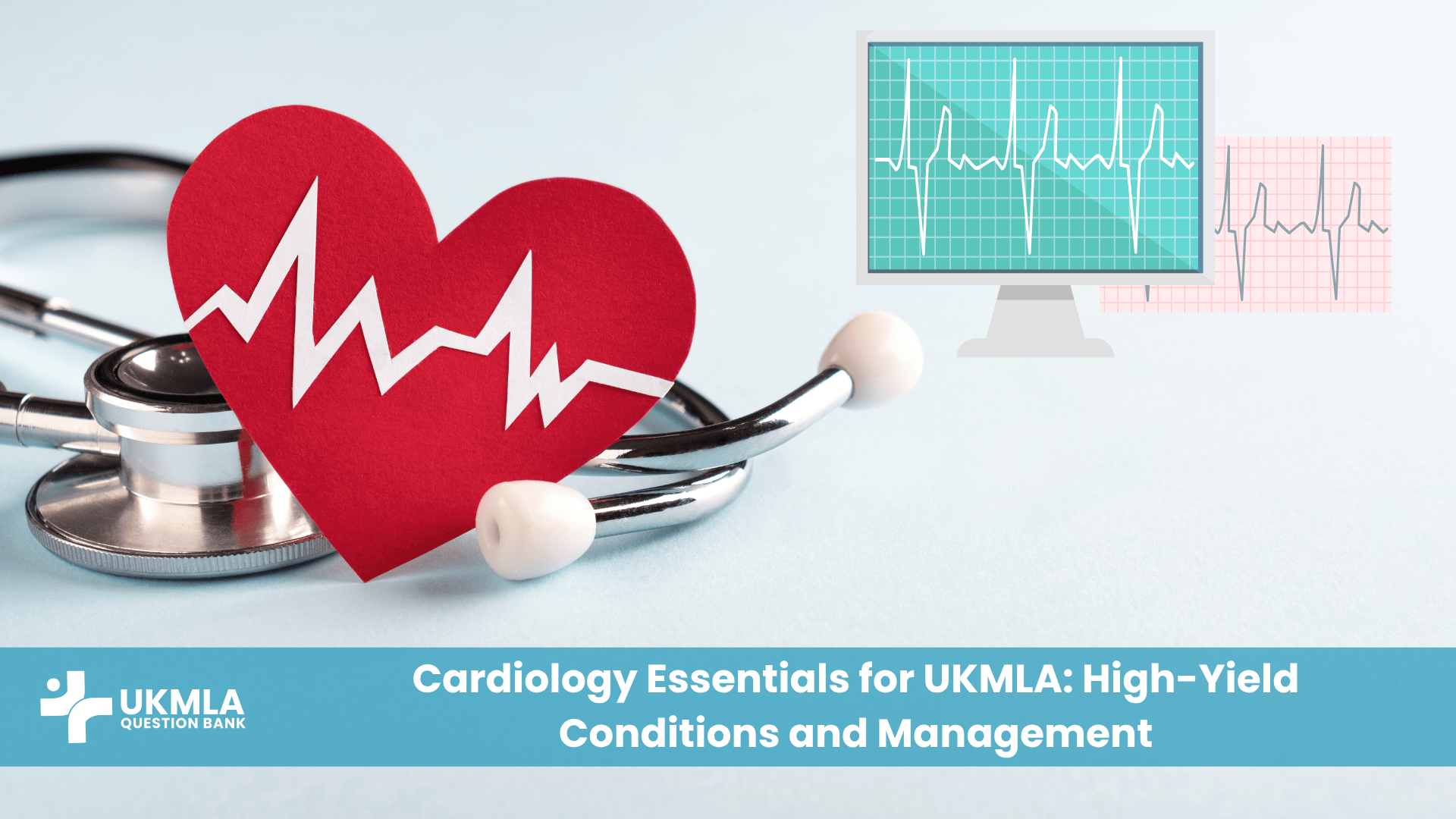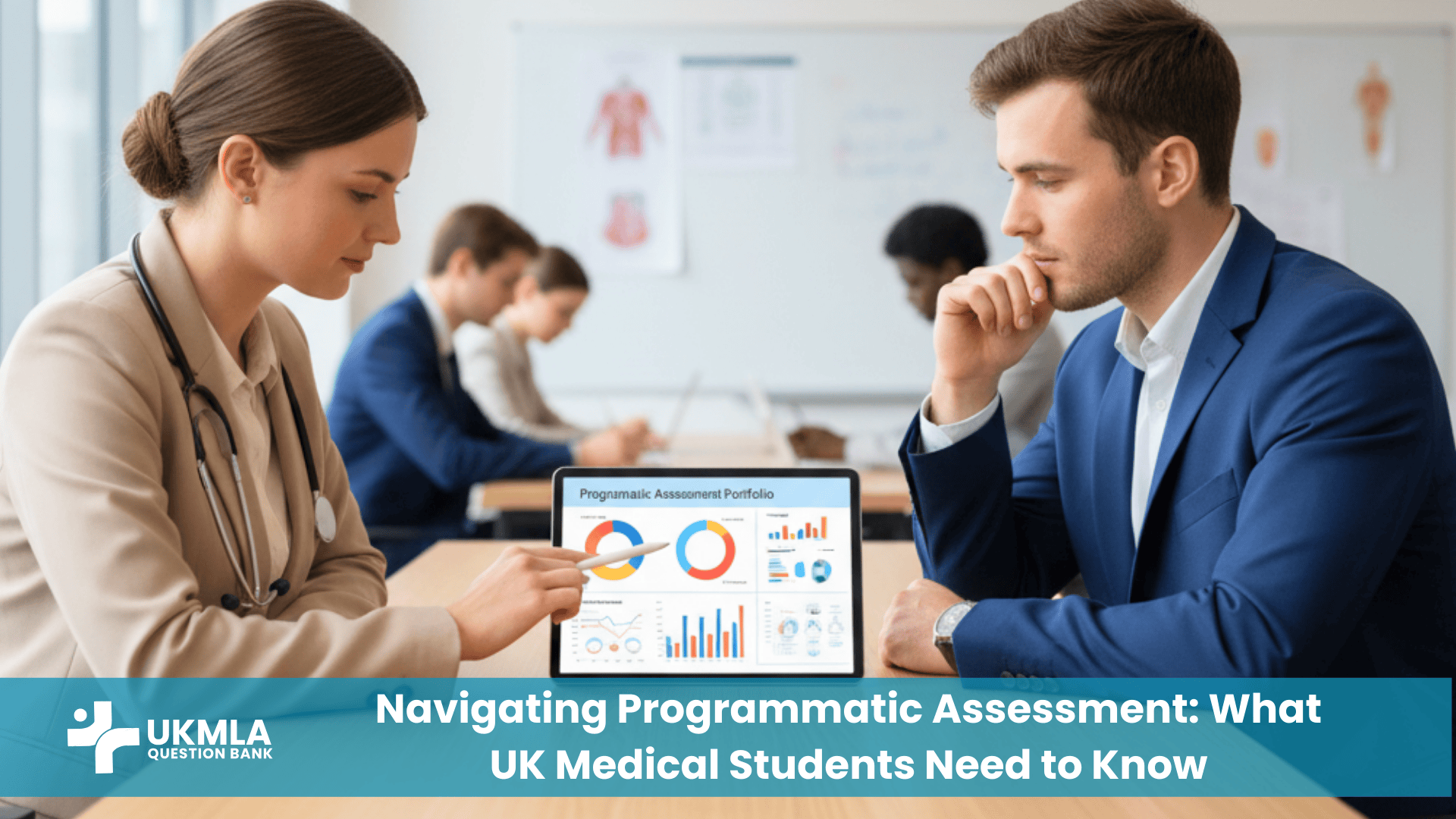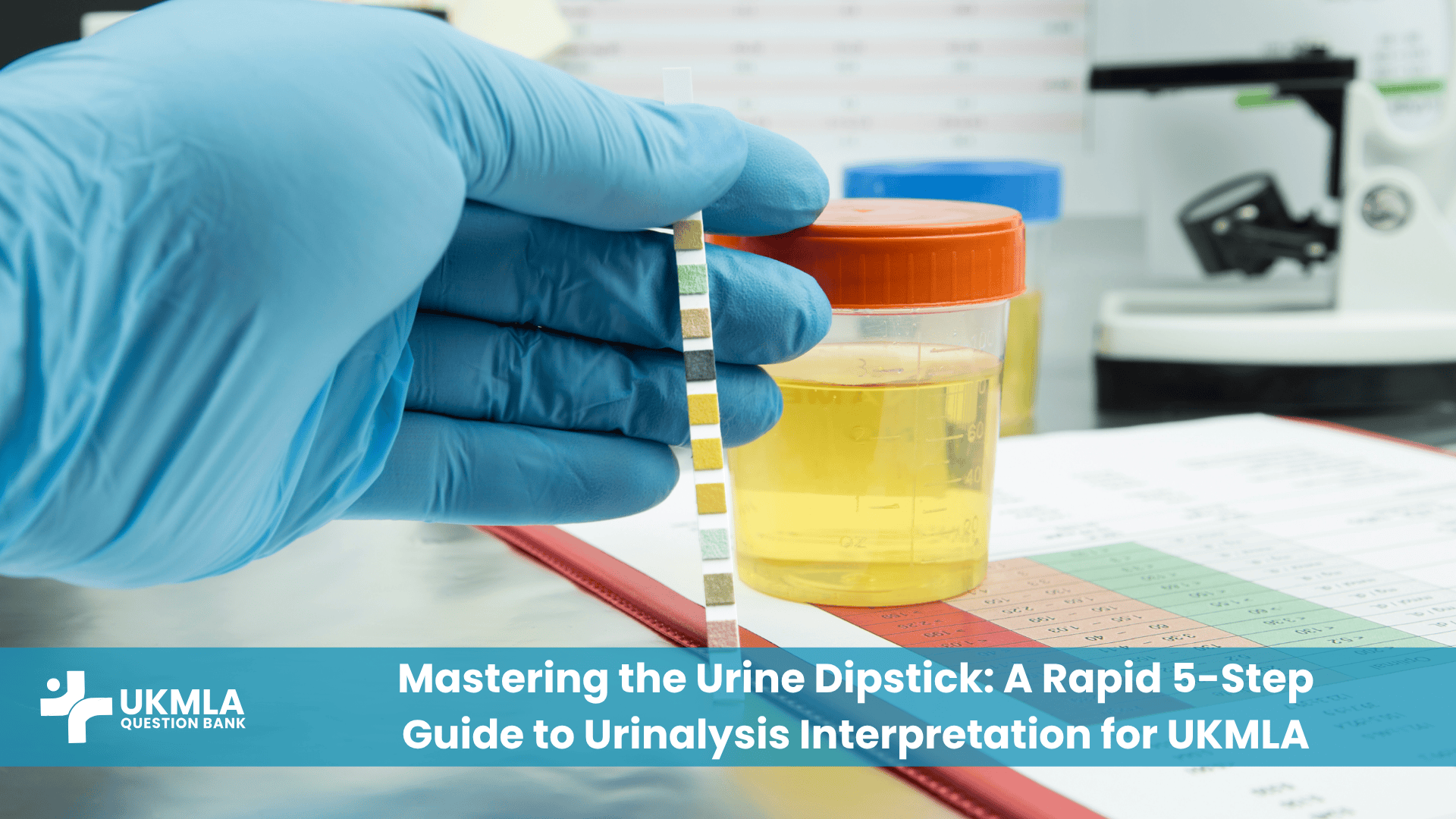Cardiology stands as a titan among the subjects tested in the UKMLA Applied Knowledge Test (AKT). Its vast scope, encompassing everything from common chronic conditions to life-threatening emergencies, makes it a frequent and high-yield area of assessment. A solid grasp of UKMLA cardiology essentials is not just beneficial for passing the exam; it is fundamental to safe and competent medical practice in the UK. Understanding the core conditions, their typical presentations, and their evidence-based management is a non-negotiable part of your preparation.
This guide is designed to streamline your revision by focusing on the most critical UKMLA cardiology essentials. We will break down the high-yield conditions that are most likely to appear on your exam, from acute coronary syndromes and heart failure to common arrhythmias and valvular disease. By exploring their pathophysiology, key diagnostic features, and modern management strategies, you will build a robust framework for tackling any cardiology question the UKMLA AKT throws your way. This focused approach will help you study smarter, not just harder.
Key Takeaways
Before we delve into the specifics, here are the core principles for mastering UKMLA cardiology essentials:
Focus on High-Yield Topics: Prioritize common and critical conditions like ischaemic heart disease, heart failure, atrial fibrillation, and hypertension.
Understand Pathophysiology: A strong understanding of why a disease occurs will help you reason through clinical presentations and management choices.
Master ECG Interpretation: Basic ECG interpretation is a fundamental skill and a frequent component of cardiology questions.
Know Your Guidelines: Be familiar with key principles from current UK guidelines (e.g., NICE) for managing common cardiovascular conditions.
Pharmacology is Crucial: Have a firm grasp of the mechanisms, indications, and major side effects of common cardiovascular drugs.
Practice with Clinical Vignettes: Use question banks to practice applying your knowledge to realistic patient scenarios, which is key to mastering UKMLA cardiology essentials.
Integrate Knowledge: Connect symptoms, examination findings, investigation results, and management plans into a cohesive clinical picture.
Why Cardiology is a High-Yield Pillar of the UKMLA AKT
Cardiovascular disease is a leading cause of morbidity and mortality in the UK, making it a priority for the healthcare system and, consequently, a major focus of the UKMLA. The exam is designed to ensure that newly qualified doctors are competent in managing these prevalent and often urgent conditions.
The Prevalence of Cardiovascular Disease in Clinical Practice
As a junior doctor, you will encounter patients with cardiovascular problems daily, whether on the wards, in A&E, or in GP clinics. The UKMLA reflects this reality. The GMC’s framework for the exam is designed to test your “readiness for safe practice,” and a significant part of that is the ability to recognize and appropriately manage cardiac issues.
Therefore, a deep understanding of UKMLA cardiology essentials is not just about passing an exam; it’s about preparing for your career. The knowledge you build now will be used throughout your professional life.
Aligning Your Study with the UKMLA Content Map
The best way to identify high-yield topics is by using the official exam blueprint. For a detailed breakdown of how to use this critical resource, our guide on “How to Use the GMC UKMLA Content Map to Structure Your Revision” is an invaluable read. The content map clearly outlines the clinical presentations and conditions that are considered core knowledge.
When you analyze the content map, you will see that cardiovascular presentations are heavily featured. By aligning your study with this blueprint, you can be confident that you are focusing your efforts on the topics most likely to be tested, ensuring your grasp of UKMLA cardiology essentials is exam-relevant.
The Nature of Cardiology SBA Questions
Cardiology lends itself perfectly to the Single Best Answer (SBA) question format. The specialty is rich with scenarios that require diagnostic reasoning, data interpretation (especially ECGs), and nuanced management decisions. Questions will often present a clinical vignette and ask for the most likely diagnosis, the most important initial investigation, or the definitive management.
To excel, you must go beyond memorization and develop a systematic approach to clinical problem-solving. Understanding how these questions are structured is key, a topic we explore in our article “UKMLA AKT: How to Tackle Single Best Answer (SBA) Questions Effectively“.
Ischaemic Heart Disease: The Core of UKMLA Cardiology Essentials
Ischaemic heart disease (IHD), including its acute and chronic manifestations, is arguably the most important area within UKMLA cardiology essentials.
Acute Coronary Syndromes (ACS): STEMI & NSTEMI
You must have a rock-solid understanding of Acute Coronary Syndromes. This includes differentiating between unstable angina, NSTEMI (Non-ST Elevation Myocardial Infarction), and STEMI (ST-Elevation Myocardial Infarction).
Presentation: Be familiar with the classic symptoms (central crushing chest pain, radiation to the arm/jaw, sweating, nausea) but also be aware of atypical presentations (e.g., in women, the elderly, or people with diabetes).
Initial Management (MONA is outdated): The modern approach involves Aspirin, antiplatelets (e.g., clopidogrel, ticagrelor), analgesia (e.g., morphine), nitrates (with caution), and immediate risk stratification.
Definitive Management: Know the indications for immediate Percutaneous Coronary Intervention (PCI) in STEMI versus a more conservative or delayed approach in NSTEMI. The official NICE guidance on ACS provides the detailed pathways you are expected to know.
Stable Angina Pectoris
Stable angina is a common presentation in primary care and outpatient clinics. Your understanding should cover:
Diagnosis: Based on the characteristic history of exertional chest tightness relieved by rest or GTN spray.
Management Goals: The aims are twofold: to improve symptoms and to reduce the long-term risk of an ACS event.
Pharmacological Management: This includes anti-anginal medications (e.g., beta-blockers, calcium channel blockers) and secondary prevention drugs (e.g., aspirin, statins).
Highlight: A key part of mastering UKMLA cardiology essentials is understanding not just the acute management, but also the principles of long-term secondary prevention for all forms of IHD.
Key Investigations in Ischaemic Heart Disease
Being able to select the most appropriate investigation is a frequently tested skill. You need to know when and why each test is used.
| Investigation | Indication in Ischaemic Heart Disease | What it Shows |
|---|---|---|
| ECG (12-lead) | First-line for any suspected cardiac chest pain. | ST elevation/depression, T wave inversion, Q waves. Differentiates STEMI from NSTEMI/unstable angina. |
| Troponin | Blood test for suspected ACS. | A raised level indicates myocardial necrosis (cell death), confirming an MI (NSTEMI or STEMI). |
| CT Coronary Angiogram | First-line investigation for stable chest pain where the diagnosis of stable angina is uncertain. | Visualizes the coronary arteries to detect stenosis. |
| Invasive Coronary Angiogram | Gold standard for assessing coronary anatomy, used in ACS and for guiding revascularisation (PCI/CABG). | Shows the exact location and severity of coronary artery blockages. |
Heart Failure: A Chronic Condition with Acute Consequences
Heart failure is another cornerstone of UKMLA cardiology essentials. You must be comfortable with both chronic management and recognizing acute decompensation.
Recognizing the Signs and Symptoms of Heart Failure
The diagnosis of heart failure is primarily clinical, supported by investigations. Be familiar with the classic symptoms and signs:
Symptoms: Breathlessness (on exertion, when lying flat, or waking from sleep), fatigue, and peripheral oedema (swollen ankles).
Signs: Raised JVP, bibasal crackles on lung auscultation, peripheral oedema, and sometimes a third heart sound.
Key Diagnostic Marker: A raised Brain Natriuretic Peptide (BNP or NT-proBNP) blood test makes the diagnosis of heart failure likely and warrants further investigation with an echocardiogram.
Pharmacological Management of Chronic Heart Failure
The management of chronic Heart Failure with Reduced Ejection Fraction (HFrEF) has evolved significantly. The “four pillars” of modern treatment are a high-yield topic.
“Modern heart failure therapy is built on the foundation of four key drug classes, which have been shown in major trials to improve both survival and quality of life. A junior doctor’s familiarity with these is essential for safe practice.” – (Attributed to a consultant cardiologist).
| Drug Class | Example(s) | Key Mechanism/Benefit |
|---|---|---|
| ACE Inhibitor / ARB | Ramipril / Candesartan | Block the RAAS system, reduce mortality. |
| Beta-Blocker | Bisoprolol, Carvedilol | Block excessive sympathetic stimulation, reduce mortality. |
| MRA (Mineralocorticoid Receptor Antagonist) | Spironolactone, Eplerenone | Block aldosterone, reduce mortality and hospitalisations. |
| SGLT2 Inhibitor | Dapagliflozin, Empagliflozin | New pillar, reduces mortality and hospitalisations. |
Acute Decompensated Heart Failure Management
Recognizing a patient with acute, life-threatening pulmonary oedema is a critical skill. The management can be remembered by the mnemonic “Sit up, Oxygen, IV Furosemide, IV Nitrates.” You need to understand the rationale for each step and the importance of monitoring the patient’s fluid balance and renal function closely. Connecting this book knowledge to real cases is vital, a theme explored in our guide on “Integrating Clinical Experience with UKMLA Book Study“.
Common Arrhythmias and Valvular Heart Disease
Rounding out the high-yield UKMLA cardiology essentials are common rhythm disturbances and structural heart problems.
Atrial Fibrillation: Rate, Rhythm, and Stroke Prevention
Atrial Fibrillation (AF) is the most common sustained cardiac arrhythmia. Your knowledge must cover three domains:
Rate Control: Usually the first-line approach, using drugs like beta-blockers or calcium channel blockers.
Rhythm Control: Considered in younger, more symptomatic patients. Can involve cardioversion or anti-arrhythmic drugs.
Stroke Prevention: This is critical. You must be able to assess a patient’s stroke risk and decide on the need for anticoagulation. Highlight: Knowing how and when to use risk stratification scores is a key competency for the UKMLA cardiology essinrials.
| CHA₂DS₂-VASc Score Component | Points |
|---|---|
| Congestive heart failure | 1 |
| Hypertension | 1 |
| Age ≥ 75 | 2 |
| Diabetes | 1 |
| Stroke / TIA / Thromboembolism | 2 |
| Vascular disease (e.g., MI, PVD) | 1 |
| Age 65-74 | 1 |
| Sc Sex category (Female) | 1 |
| A score of 2 or more in men, or 3 or more in women, is a strong indication for anticoagulation. | |
Key Valvular Conditions: Aortic Stenosis and Mitral Regurgitation
While you should be aware of all major valvular diseases, aortic stenosis and mitral regurgitation are the most common and therefore the most high-yield for the UKMLA cardiology essentials.
Aortic Stenosis: Know the classic triad of exertional syncope, angina, and dyspnoea, and the characteristic ejection systolic murmur.
Mitral Regurgitation: Understand its causes (e.g., post-MI, degenerative) and the typical pansystolic murmur. For both, you should understand that the definitive diagnosis is made by echocardiogram and that management is ultimately surgical or procedural (e.g., TAVI).
Hypertension: The Silent Killer and Its Management
Hypertension is incredibly common. For the UKMLA, you need to know:
Diagnostic Criteria: How to diagnose hypertension based on clinic and ambulatory/home readings.
When to Treat: The thresholds for starting pharmacological treatment based on age and comorbidities.
Stepwise Management: The “A, C, D” algorithm for drug treatment (A=ACEi/ARB, C=CCB, D=Diuretic) as recommended by UK guidelines. You must be familiar with the official guidance from bodies like the General Medical Council (GMC) on professional standards when prescribing.
Frequently Asked Questions (FAQs) on Cardiology Essentials for UKMLA: High-Yield Conditions and Management
Here are answers to some frequently asked questions about UKMLA cardiology essentials:
You need to be proficient in recognizing common, critical patterns: STEMI, NSTEMI changes (ST depression, T-wave inversion), atrial fibrillation, heart blocks (1st, 2nd, 3rd degree), and features of electrolyte disturbances like hyperkalaemia.
You should know the standard starting doses of very common and emergency drugs (e.g., aspirin 300mg in ACS). For most others, knowing the drug class, mechanism, major side effects, and contraindications is more important than the exact dosage.
It’s unlikely. The UKMLA cardiology essentials focus on common conditions relevant to an FY1 doctor. While a very classic presentation of something like Tetralogy of Fallot could appear, your revision time is better spent on IHD, heart failure, and AF.
It is not necessary to know trial names. You need to know the outcomes of those trials—i.e., that beta-blockers improve mortality in heart failure—but not the specific trial acronym.
Focus on the most common and clinically significant ones: aortic stenosis, mitral regurgitation, aortic regurgitation, and mitral stenosis. You should know their timing (systolic/diastolic), character, and where they are best heard.
Yes, reference ranges for laboratory values are typically provided. Your job is to interpret the result in the clinical context, not to memorize the exact numbers.
Read the final lead-in question first to know what you’re looking for (e.g., diagnosis, management). Then, scan the vignette for keywords related to age, timing (acute/chronic), symptoms, and key examination or ECG findings.
Yes, absolutely. Secondary prevention is a core part of UKMLA cardiology essentials. Know the indications for statin therapy for primary and secondary prevention.
Look for key differentiators. Pericarditis pain is often sharp, pleuritic (worse on inspiration), and relieved by sitting forward. The ECG shows widespread “saddle-shaped” ST elevation, which is different from the localized, “tombstone” ST elevation of a STEMI.
Combine a structured review of core topics with a large volume of practice questions from a high-quality question bank. Create summaries, particularly for management algorithms, and practice ECG interpretation regularly.
Conclusion: Building Confidence in UKMLA Cardiology
Mastering the UKMLA cardiology essentials is a significant but achievable goal. By focusing on high-yield conditions, understanding the underlying principles of pathophysiology and pharmacology, and practicing the application of your knowledge through SBA questions, you can build a strong and lasting foundation. This knowledge will not only serve you well on exam day but will be indispensable throughout your medical career.
Approach your revision systematically, align it with the official UKMLA blueprint, and consistently test yourself. A confident and competent approach to cardiology is a hallmark of a safe and effective junior doctor, and demonstrating this is key to your success in the UKMLA AKT.




